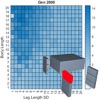Abstract
We study the effects of injecting human-generated designs into the initial population of an evolutionary robotics experiment, where subsequent generations of robots are optimised via a Genetic Algorithm and MAP-Elites. First, human participants interact via a graphical front-end to explore a directly-parameterised legged robot design space and attempt to produce robots via a combination of intuition and trial-and-error that perform well in a range of environments. Environments are generated whose corresponding high-performance robot designs range from intuitive to complex and hard to grasp. Once the human designs have been collected, their impact on the evolutionary process is assessed by replacing a varying number of designs in the initial population with human designs and subsequently running the evolutionary algorithm. Our results suggest that a balance of random and hand-designed initial solutions provides best performance for the problems considered, and that human designs are most valuable when the problem is intuitive. The influence of human design in an evolutionary algorithm is a highly understudied area, and the insights provided in this paper may be valuable to those in the area of AI-based design more generally.
Data
We provide equivalent data in MATLAB and Python format. The MATLAB data can be coupled with the tools in the code repo to recreate and inspect the plots we presented in the paper, and redo the statistical tests. There are also many other interesting plotting and testing options available in the tool. Follow the instructions in the codebase for more details. The pickle format contains the data and statistics of every experiment in separate dictionaries. Check the readme.md in the package for the available keys and their meanings. The statistical-test-result sheet contains the results of all the statistical results we did. And the models of the environments and robot parts, and the human designs can be found in the meta section.
MATLAB
Pickle
Statistical Test Results
Meta
- Human Designs: https://drive.google.com/file/d/1yNjekNrANm0vCs9f1YSBaROoDwuWVmGJ/view?usp=sharing
- Robot parts: https://drive.google.com/file/d/1O9K0rKxT8CZXC50StlMJxOy7RoxXFbEN/view?usp=sharing
- Environments: https://drive.google.com/file/d/1O9K0rKxT8CZXC50StlMJxOy7RoxXFbEN/view?usp=sharing
Publication
 | EvoRobogami: Co-designing with Humans in Evolutionary Robotics Experiments (Conference) Genetic and Evolutionary Computation Conference (GECCO), 2022. |
BibTeX (Download)
@conference{huang2022evorobogami,
title = {EvoRobogami: Co-designing with Humans in Evolutionary Robotics Experiments},
author = {Zonghao Huang and Quinn Wu and David Howard and Cynthia Sung},
url = {https://arxiv.org/abs/2205.08086
https://sung.seas.upenn.edu/publications/evorobogami-gecco-2022/},
doi = {10.1145/3512290.3528867},
year = {2022},
date = {2022-07-09},
urldate = {2022-07-09},
booktitle = {Genetic and Evolutionary Computation Conference (GECCO)},
abstract = {We study the effects of injecting human-generated designs into the initial population of an evolutionary robotics experiment, where subsequent population of robots are optimised via a Genetic Algorithm and MAP-Elites. First, human participants interact via a graphical front-end to explore a directly-parameterised legged robot design space and attempt to produce robots via a combination of intuition and trial-and-error that perform well in a range of environments. Environments are generated whose corresponding high-performance robot designs range from intuitive to complex and hard to grasp. Once the human designs have been collected, their impact on the evolutionary process is assessed by replacing a varying number of designs in the initial population with human designs and subsequently running the evolutionary algorithm. Our results suggest that a balance of random and hand-designed initial solutions provides the best performance for the problems considered, and that human designs are most valuable when the problem is intuitive. The influence of human design in an evolutionary algorithm is a highly understudied area, and the insights in this paper may be valuable to the area of AI-based design more generally. },
keywords = {2022, computational design},
pubstate = {published},
tppubtype = {conference}
}
Acknowledgments
The work was supported in part by the National Science Foundation (NAF) under Grant #1845339. Any opinions, findings, and conclusions or recommendations expressed in this material are those of the author(s) and do not necessarily reflect the views of funding source.
